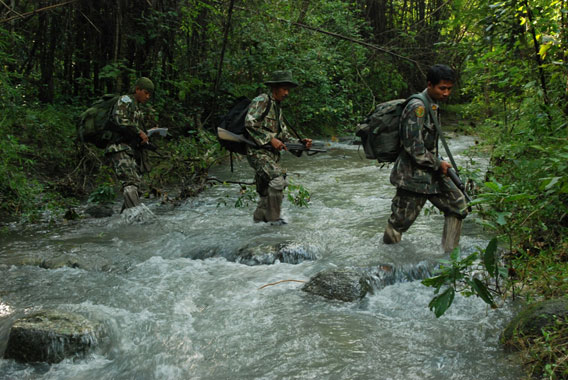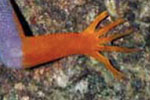.568.jpg)
The Endangered peafowl on camera trap. Photo by: DNP-Government of Thailand/WCS Thailand Program.
A year’s worth of camera trap videos (see photos and video below) are proving that scaled-up anti-poaching efforts in Thailand’s Western Forest Complex are working. Capturing rare glimpses of endangered, elusive animals—from clouded leopards (Neofelis nebulosa) to banteng (Bos javanicus), a rarely seen wild cattle—the videos highlight the conservation importance of the Western Forest Complex, which includes 17 protected areas in Thailand and Myanmar.
“The video represents a huge payoff for the government of Thailand, which has invested considerable resources in protecting wildlife and preventing illegal hunters from plundering the country’s natural heritage,” said Joe Walston, director of the Wildlife Conservation Society’s (WCS) Asia Program, which is heading the video camera trapping effort.
WCS says that the videos help prove that Indochinese tigers (Panthera tigris corbetti) and prey populations in the region have stabilized. Estimations of tigers in the area range from 125 to 175 individuals, while the area also sustains one of the largest Asian elephant (Elephas maximus) populations in Southeast Asia.
According to WCS, which works with the Thai government, the country has one of the best anti-poaching records in Asia.
Shown in the video:
Indochinese tigers (Panthera tigris corbetti), Endangered according to the IUCN Red List
Leopard (Panthera pardus), Near Threatened
Green peafowl (Pavo muticus), Endangered
Sun bear (Ursus malayanus), Vulnerable
Asian elephant (Elephas maximus), Endangered
Gaur (Bos gaurus), Vulnerable
Dhole (Cuon alpinus), Endangered
Clouded leopard (Neofelis nebulosa), Vulnerable
Banteng (Bos javanicus), Endangered
Wild pig (Sus scrofa), Least Concern
Common muntjac ? (Muntiacus muntjak), Least Concern
Malayan tapir (Tapirus indicus), Endangered
.568.jpg)
A Malayan tapir, listed as Endangered. Photo by: DNP-Government of Thailand/WCS Thailand Program.
.568.jpg)
A herd of Asian elephants caught on camera trap. Photo by: DNP-Government of Thailand/WCS Thailand Program.
.568.jpg)
A tigress drinks with her cubs from a watering hole inside Thailand’s Western Forest Complex.. Photo by: Photo by: DNP-Government of Thailand/WCS Thailand Program.

An anti-poaching team on patrol. Photo by: DNP-Government of Thailand/WCS Thailand Program.
Related articles
Photos: 208 species discovered in endangered Mekong region in 2010

(12/14/2011) Last year researchers scoured forests, rivers, wetlands, and islands in the vanishing ecosystems of the Mekong Delta to uncover an astounding 208 new species over a twelve month period. A new report by the World Wide Fund for Nature (WWF) highlights a number of the new species—from a new snub-nosed monkey to five new meat-eating pitcher plants to a an all-female, cloning lizard—while warning that many of them may soon be gone as the Mekong Delta suffers widespread deforestation, over-hunting and poaching, massive development projects, the destruction of mangroves, pollution, climate change, and a growing population.
How to fight organized wildlife crime in East Asia

(07/27/2011) Organized criminal syndicates are wiping out some of the world’s most charismatic wildlife to feed a growing appetite for animal parts in East Asia#8212;and so far governments and law enforcement are dropping the ball. This is the conclusion from a new paper in Oryx, which warns unless officials start taking wildlife crime seriously a number of important species could vanish from the Earth.
‘Trophy’ cell phone pictures lead to arrests of tiger poachers
(07/14/2011) Two poachers were arrested in Thailand after a cell phone they left behind in the forest provided evidence of tiger poaching, reports the Wildlife Conservation Society (WCS).